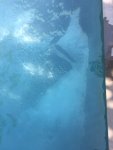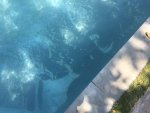I have a situation with unbalanced water chemistry, algae and a filter which needs to be cleaned. My plan was to shock the pool today and clean the cartridge filter in a day or two after the algae has been eliminated or reduced. I did not want to put algae right back into a clean filter.
I am working on my pool as I write this so I need to make a decision. Am I looking at the timing of the filter cleaning the right way or should I consider cleaning the filter at the same time as shocking?
Thank you.
I am working on my pool as I write this so I need to make a decision. Am I looking at the timing of the filter cleaning the right way or should I consider cleaning the filter at the same time as shocking?
Thank you.





